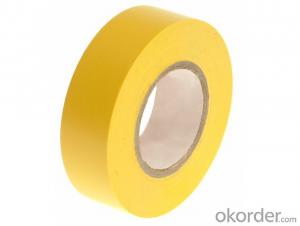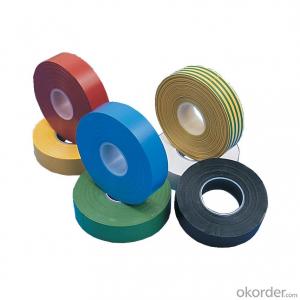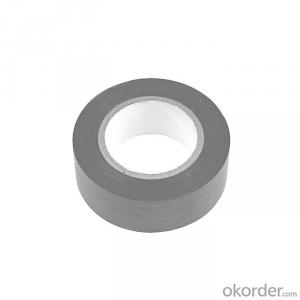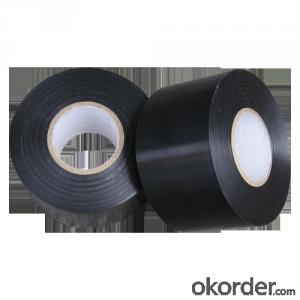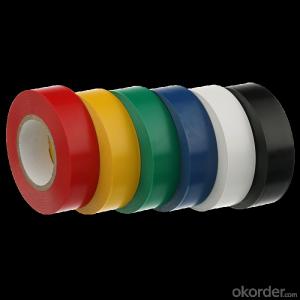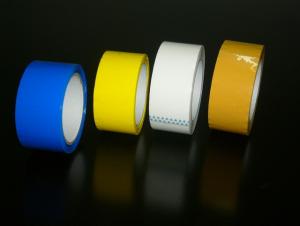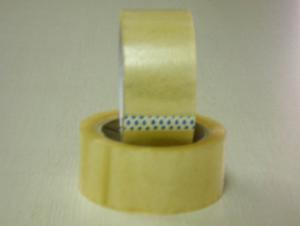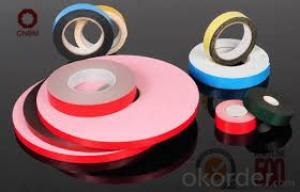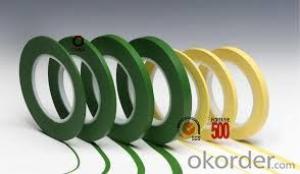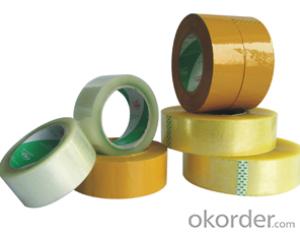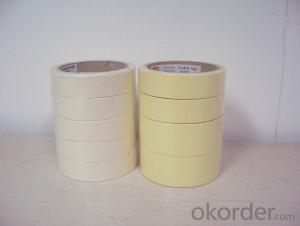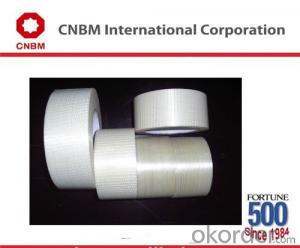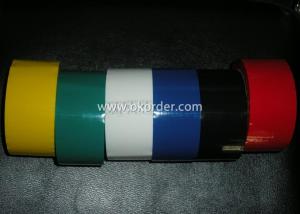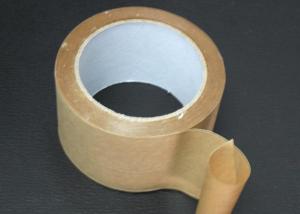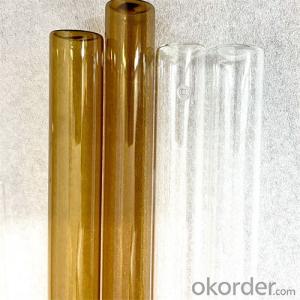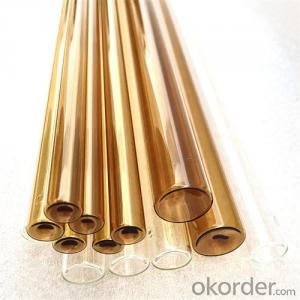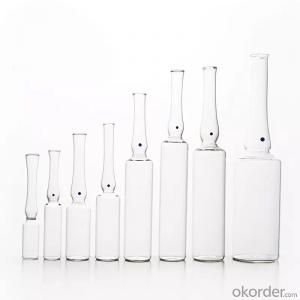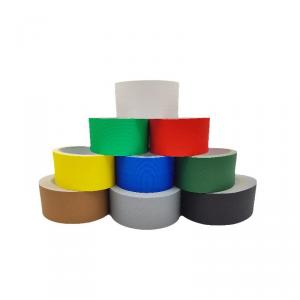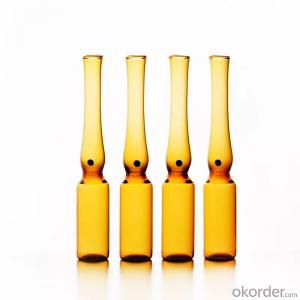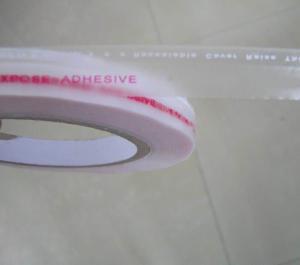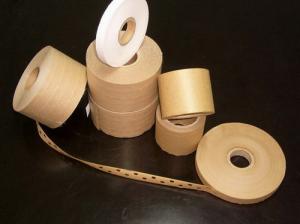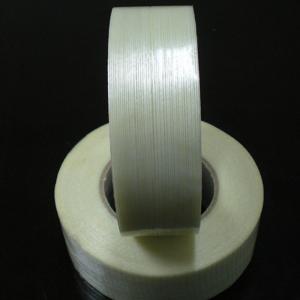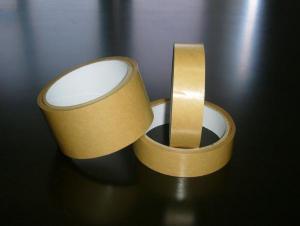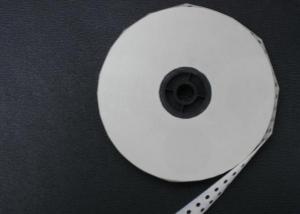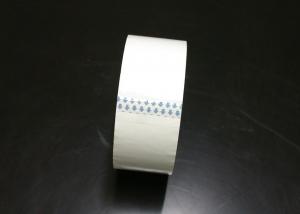3m Reflective Adhesive clothing fabric Colorful Tape
- Loading Port:
- Tianjin
- Payment Terms:
- TT OR LC
- Min Order Qty:
- 6500 m
- Supply Capability:
- 500000 m/month
OKorder Service Pledge
OKorder Financial Service
You Might Also Like
Item specifice
1.Product details
Brand Name | 3m Reflective Adhesive clothing fabric Colorful Tape |
Color | Colorful |
Material | 100 % Polyester or TC (65% polyester and 35% cotton) |
Reflective Coefficient | R> 420 cd/lx.m2 |
Washing Instruction | Home wash 50 cycles @ 60°C (ISO6330) |
Certification | OEKO-TEX 100; EN20471; ANSI/ISEA 107-2010 Level 2; AS/NZS 1906.4-2010; CSA-Z96-02 |
Width | 1cm-135cm |
Packing | 200meters/R or 100meters/R or as per customers’ request |
Delivery time | 7-15 days after receiving payment |
Departure Port | Tianjin |
2.Packaging & Delivery
Packaging Details:
200meters/roll, packed in carton box
Delivery Detail:
Shipped in 15 days since receiving payment
3.Product certification and Factory
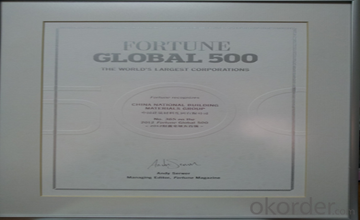
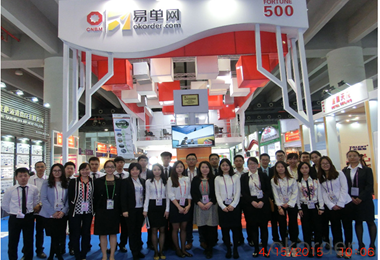
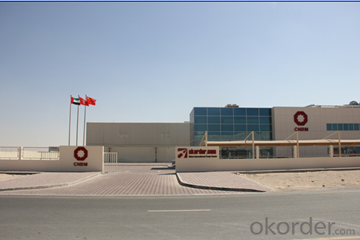
4.Company information
China National Building Material Group Corporation(CNBM), estiblished in 1984, as the largest group corporation of building materials in China. It ranked the 267th among the global FORTUNE 500 CORPORATIONS. And it's a China state-owned enterprise, ranked the 143 large-scale groups under the administration of the state-owned Assets supervision and administration commission of the state council.
With thelargest geosynthetics base about 667000m2 in China and have about 120production lines for all geo materials. For geotextile, our production capacity each day can be 300,000m2. We warmly welcome your order and visit. CNBM guarantee good quality and serivce with comptetitive prices.
5.Product show
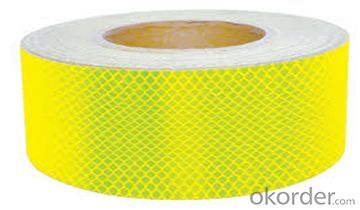
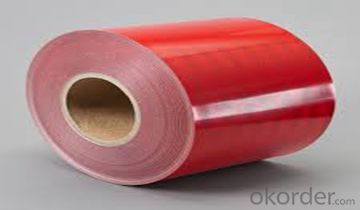

Q1: May I have samples?
A: Yes, Free samples available and freight collect by DHL,FEDEX,TNT,UPS,SF,ect.
Q2: Are you manufacturer or trading company?
A: We are professional Manufacturer/factory .
Q3: Can I use our own designing?
A: Yes, size, color, printing, logo, paper core, carton box can be customized.
- Q:Does packaging tape come in different finishes or textures for aesthetic purposes?
- Different finishes and textures are available for packaging tape to cater to aesthetic preferences. While the main purpose of packaging tape is to securely seal boxes and packages, manufacturers understand the significance of aesthetics in packaging. Consequently, they have created packaging tapes with various finishes and textures to accommodate diverse preferences. Certain packaging tapes have a glossy finish, which gives the package a polished and professional appearance. These tapes typically have a smooth and shiny surface that reflects light, resulting in a visually appealing package. Glossy packaging tapes are commonly used in industries that require a high-end presentation, such as luxury goods or high-quality products. On the other hand, there are also packaging tapes with matte or satin finishes. These tapes provide a more subtle and refined look to the package, exuding sophistication. Matte or satin tapes are often preferred in industries that value a more understated aesthetic, such as cosmetics or boutique products. In addition to finishes, packaging tape can also have different textures. For instance, some tapes feature a textured or patterned surface, adding a tactile element to the packaging. These tapes may have embossed patterns like dots, stripes, or even company logos, enhancing the overall visual appeal and distinctiveness of the package. In conclusion, packaging tape is available in various finishes and textures to satisfy aesthetic needs. Whether it is a glossy, matte, satin, or textured surface, these options allow businesses to choose packaging tape that aligns with their branding and desired presentation. By utilizing different finishes and textures, packaging tape not only fulfills its primary function but also contributes to a more visually appealing and personalized packaging experience.
- Q:Can packaging tape be used for sealing perishable food items?
- Using packaging tape to seal perishable food items is not recommended. This is because packaging tape is typically made of materials like polypropylene or PVC, which are not suitable for food safety and may contaminate the food. Additionally, packaging tape is not designed to create an airtight seal, which is essential for preserving the freshness and preventing spoilage of perishable food items. To ensure the safety and quality of perishable food items, it is advisable to use appropriate food-safe sealing methods such as ziplock bags, airtight containers, or food-grade cling wrap.
- Q:Can packaging tape be used for sealing wooden furniture?
- Yes, packaging tape can be used for sealing wooden furniture, but it is not the most suitable option. Packaging tape is not specifically designed for sealing wood and may not provide a long-lasting or aesthetically pleasing seal. It is recommended to use appropriate wood sealants or adhesives specifically made for wooden surfaces for better results.
- Q:How does packaging tape perform on non-porous surfaces?
- Packaging tape is designed to adhere to a wide range of surfaces, including non-porous ones. Non-porous surfaces, such as glass, metal, plastic, or sealed wood, offer a smooth and impermeable surface, which can sometimes make it challenging for adhesives to stick effectively. However, packaging tapes are engineered with strong adhesive properties that allow them to perform efficiently even on non-porous surfaces. When applied to a non-porous surface, packaging tape forms a strong bond due to its high tackiness and cohesive strength. The adhesive on the tape is formulated to have excellent adhesion properties, ensuring a reliable seal. It firmly sticks to the surface, creating a secure bond that is resistant to peeling or lifting. Additionally, packaging tapes are often designed with special features like acrylic or hot melt adhesives, which enhance their performance on non-porous surfaces. Acrylic adhesive tapes are known for their excellent initial tack, quick adhesion, and long-term durability. They can withstand temperature changes, humidity, and UV exposure, making them suitable for various environments. Hot melt adhesive tapes offer superior bonding strength and are ideal for heavy-duty applications, ensuring a strong hold on non-porous surfaces. Moreover, packaging tapes are typically made from durable materials like polypropylene or polyester, which are resistant to tearing or stretching. This further enhances their performance on non-porous surfaces, as they can withstand the rigors of shipping and handling without compromising their adhesive properties. In summary, packaging tape is specifically designed to perform well on non-porous surfaces. Its strong adhesive properties, special adhesive formulations, and durable materials allow it to create a reliable seal on glass, metal, plastic, or sealed wood. Whether for packaging, shipping, or general use, packaging tape is a reliable choice for securing items on non-porous surfaces.
- Q:Can packaging tape be used for sealing musical instruments or equipment?
- Musical instruments or equipment should not be sealed with packaging tape. Although packaging tape is intended for securely sealing boxes and packages, it is not appropriate for sealing musical instruments or equipment for a variety of reasons. Firstly, the use of packaging tape may result in residue or adhesive marks on the surface of the instrument or equipment, potentially causing damage to the finish or overall appearance. Musical instruments and equipment often possess delicate finishes that necessitate special care and attention, and the application of packaging tape could lead to unwanted marks or harm. Secondly, packaging tape may not provide adequate protection or support for fragile or valuable musical instruments or equipment. Musical instruments, particularly those crafted from wood, can be sensitive to fluctuations in temperature, humidity, and pressure. The utilization of packaging tape may not offer the requisite protection to prevent harm during transportation or storage. Instead, it is preferable to employ specialized instrument or equipment cases, covers, or bags that are specifically designed to provide proper protection and support. These cases are purposefully crafted to accommodate the shape, size, and fragility of musical instruments or equipment, ensuring their safety during transportation or storage. If you require sealing a case or cover for musical instruments or equipment, it is advisable to utilize suitable sealing methods as recommended by the manufacturer. This may involve zipper closures, Velcro straps, buckles, or other mechanisms specifically devised for securing musical instruments or equipment. In conclusion, although packaging tape can be valuable for sealing boxes and packages, it is not appropriate for sealing musical instruments or equipment. To guarantee the safety and protection of your musical instruments or equipment, it is best to employ specialized cases or covers designed for this purpose.
- Q:Does packaging tape have any specific certifications or standards?
- Packaging tape possesses specific certifications and standards. Various organizations and standards establish guidelines for packaging materials, including packaging tape. One of the most prevalent certifications for packaging tape is the ISO certification from the International Organization for Standardization. ISO establishes quality management system standards, and packaging tape can acquire certification under ISO 9001:2015 to ensure that it meets specific quality criteria. Apart from ISO certification, packaging tape can also conform to industry-specific standards like those set by ASTM International or European Union directives. ASTM International develops and publishes technical standards for a wide range of materials, including packaging tape. These standards guarantee that the tape satisfies particular requirements concerning strength, adhesion, and durability. Furthermore, certain packaging tapes may possess certifications associated with their environmental impact. For instance, specific tapes may be certified as recyclable, biodegradable, or made from sustainable materials. Organizations like the FSC or the SFI grant these certifications to promote responsible forestry practices. It is crucial to note that not all packaging tapes will possess certifications or adhere to specific standards. However, if a packaging tape does have certifications or complies with certain standards, it indicates that the product satisfies particular quality, performance, or environmental criteria.
- Q:What are the different types of packaging tape available?
- There are several different types of packaging tape available, each designed for specific purposes and applications. Here are some common types: 1. Clear packaging tape: This is the most commonly used type of packaging tape. It is transparent and provides a strong adhesive bond for sealing boxes and packages. Clear tape is versatile and suitable for a wide range of applications. 2. Brown packaging tape: Also known as "brown tape" or "packing tape," this type of tape is made from brown or tan-colored material, usually reinforced with fiberglass. It offers excellent strength and durability for securing heavy or bulky packages. 3. Masking tape: While not specifically designed for packaging, masking tape can be used for light-duty sealing or labeling purposes. It is easily removable and leaves no residue, making it ideal for temporary applications. 4. Duct tape: Often recognized for its strength and versatility, duct tape is not primarily designed for packaging but can be used in certain situations. It has a strong adhesive bond and is known for its ability to stick to a wide range of surfaces, including uneven or rough ones. 5. Filament tape: This type of tape is reinforced with fiberglass filaments, providing exceptional strength and resistance. Filament tape is commonly used for bundling or reinforcing heavy or irregularly shaped items. 6. Double-sided tape: Unlike other types of packaging tape, double-sided tape has adhesive on both sides and is used for various applications, such as bonding two surfaces together or mounting objects. 7. Kraft paper tape: Made from a renewable resource, kraft paper tape is an eco-friendly alternative to plastic tapes. It is water-activated and requires moistening before application. Kraft paper tape provides a strong seal and is often used for sealing cartons or packages containing valuable or fragile items. 8. Colored packaging tape: This type of tape is available in various colors and is commonly used for color-coding packages, labeling, or adding aesthetic appeal to packages. These are just some of the different types of packaging tape available in the market. Each type has its own unique characteristics and is suitable for specific packaging needs. When choosing the appropriate tape, it is important to consider factors such as the weight and nature of the package, the environment it will be exposed to, and any specific requirements or regulations that may apply.
- Q:Can packaging tape be used for sealing wooden furniture?
- Indeed, wooden furniture can indeed be sealed with packaging tape. Although it may not be the most traditional or visually appealing choice, packaging tape can effectively close off any gaps or cracks in the furniture, thus preventing the infiltration of dust, moisture, or insects. It should be noted, however, that packaging tape is not a permanent solution, as it may not offer the same level of durability or stability as sealing methods explicitly crafted for wooden furniture, such as wood glue or epoxy. Consequently, it is advisable to employ packaging tape as a temporary remedy until a more suitable sealing technique can be implemented.
- Q:Can packaging tape be used for sealing packages with medical or pharmaceutical products?
- Yes, packaging tape can be used for sealing packages with medical or pharmaceutical products. However, it is important to consider the specific requirements and regulations for packaging in the medical and pharmaceutical industries. These industries often have stringent standards for packaging materials to ensure product safety, integrity, and compliance with regulatory guidelines. Therefore, it is recommended to use packaging tape that is specifically designed and approved for medical or pharmaceutical applications. These tapes are typically made from materials that are resistant to moisture, tampering, and provide a strong seal to protect the contents of the package. Using approved packaging tape helps to maintain the quality and integrity of medical or pharmaceutical products during storage and transportation.
- Q:Can packaging tape be used for sealing electrical or wiring components?
- No, packaging tape should not be used for sealing electrical or wiring components. Packaging tape is not designed to provide insulation or protection against electrical currents. It lacks the necessary properties to ensure the safety and reliability of electrical connections. It is important to use appropriate electrical tape or other specialized materials that are specifically designed for sealing and insulating electrical components.
1. Manufacturer Overview |
|
|---|---|
| Location | |
| Year Established | |
| Annual Output Value | |
| Main Markets | |
| Company Certifications | |
2. Manufacturer Certificates |
|
|---|---|
| a) Certification Name | |
| Range | |
| Reference | |
| Validity Period | |
3. Manufacturer Capability |
|
|---|---|
| a)Trade Capacity | |
| Nearest Port | |
| Export Percentage | |
| No.of Employees in Trade Department | |
| Language Spoken: | |
| b)Factory Information | |
| Factory Size: | |
| No. of Production Lines | |
| Contract Manufacturing | |
| Product Price Range | |
Send your message to us
3m Reflective Adhesive clothing fabric Colorful Tape
- Loading Port:
- Tianjin
- Payment Terms:
- TT OR LC
- Min Order Qty:
- 6500 m
- Supply Capability:
- 500000 m/month
OKorder Service Pledge
OKorder Financial Service
Similar products
New products
Hot products
Related keywords
